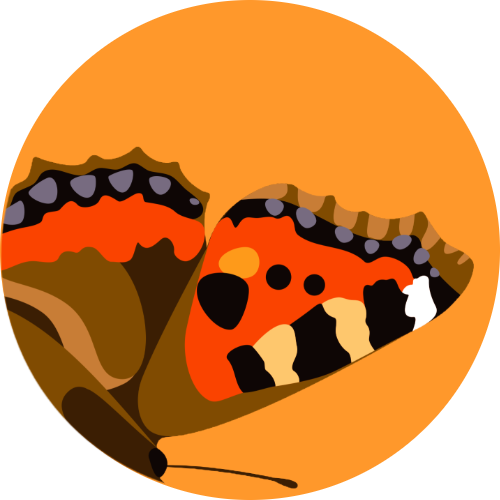The term BIODIVERSITY is used to describe variety and population of non-human life here on Planet Earth. Biodiversity includes everything from tiny microbes to blue whales.
Global biodiversity is in decline. A recent WWF report, for example, shows non-human vertebrates (that’s birds, fish and non-human mammals), have declined by 50% in number since 1970. Freshwater life has been particularly hard hit.
We are PART OF NATURE, and so rely upon what it provides to us, like food, drink, medicines and materials. We NEED to protect and encourage LIFE and HABITAT upon which life depends, not only for our own survival and the survival of our descendants but also to give back what we, and generations before us, have taken away. All life here on Planet Earth is extraordinary. In my view, for this reason alone, there is cause enough for humans, despite our own needs, to act with far greater care. Biodiversity is being depleted by the combined actions of our everyday life choices.
To co-exist with all other life, and to care at all, we need to confront what science is telling us and then act as far as we can. The most direct impacts are by over-harvesting and loss/disturbance of habitat resulting from human development and economic goals.
Increased pollution, agricultural intensification, nutrient availability and increased CO2 emissions, resulting in climate change, are also to blame.
Most people don’t actively try to harm nature, and it’s often tricky to see the connections between what we do each day and the consequences as a result. But THERE ARE CONSEQUENCES and analysis uncovers more each day.
With some simple changes, we CAN, as individuals, lessen our own adverse impacts.
Remember, as groups of individuals, we have more power to make a difference. So you might want to join up with others who are like-minded and want to act to make the changes required. Here are just ten things that will help reduce your own environmental impact, and thereby your adverse impacts on biodiversity, and in multiple ways. Feel free to think of more!
Habitat & wildlife
ONE: Reduce or QUIT the use of pesticides and fertilizers in your gardens. These often have knock-on effects in wildlife populations and run off into water courses with adverse effects for the plants and animals living there. Ask your Local Authority to do the same.
TWO: Invest and grow wildlife friendly gardens/patios or balconies and choose wildlife-friendly fencing to allow some access. Volunteer for your local wildlife trust, community garden or conservation group. Ask the Local Authority to manage their lands in a biodiversity friendly way.
Waste
THREE: Reduce, reuse, and recycle, with an emphasis on REDUCE (buy less non-essential stuff). The less habitat conversion will be necessary to get those resources or the energy to make STUFF, and the less waste goes into the landfill. Compost what you can. Ask your Local Authority for help if you need it.
FOUR: Use environmentally friendly personal and household cleaning products, for example, distilled vinegar. This reduces chemical contamination of habitats both during manufacturing and when those chemicals go down the drain. Go for BUAV labelled products too. We don’t need to be cruel to animals by endorsing companies who test their commercial products on them.
Food and the choices we make.
FIVE: Buy local, organic food and drink. Ask for it if the shops don’t stock it. Expensive? Well, you’ve saved money by acting on POINT THREE. Might as well spend it on decent food. This helps reduce fertilizers and pesticides going into the environment, which in turn reduces negative impacts on nearby beneficial insects (for pollination and pest control) and adjacent freshwater biodiversity. Grow your own if you are able or buy direct from small holdings.
SIX: Buy sustainably harvested seafood, which avoids ‘by-catch’ of other species. Some trawlers destroy seafloor habitat; many shrimp farms destroy mangrove forests, which are important as nurseries for wild fish species. Ask retailers questions!
Energy use: By reducing your energy demand, you reduce both carbon dioxide release into the atmosphere, which contributes to climate change, and disturbance of habitat for fossil fuel exploration and extraction. And you make savings.
SEVEN: Conserve energy in your home. Home energy audits are available from power companies. They know it’s more economical to conserve than having to build new power generating plants. Take advantage of any reasonable government schemes on offer.
EIGHT: Reduce single-person car use. Car pools, public transport, walking, and bicycling are also options. Look into the growing number of fuel efficient vehicles, electric, hybrid or turbo diesel (tdi) models. Go for an MPG as high as you can find, and check your tyre pressures.
NINE: Home-buy OR rent, choose a home with renewable energy and/or energy efficiency. Decide what’s most important about your region, your site and your needs, and you can still have a beautiful, comfy home. Think about using green landscaping and building materials and allow for nature in any external design ideas.
TEN: VOTE! Find out about legislation affecting biodiversity, make contact with your local political representatives, tell them how you feel and ask them what they will do to help. And support people and groups who are acting on long-term ecological sustainability.
Good luck and talk to your friends and family if you can. Thank you!
With thanks to David Hooper, Western Washington University, for inspiration on the 10 point structure.

Leave a reply to seasonalight Cancel reply